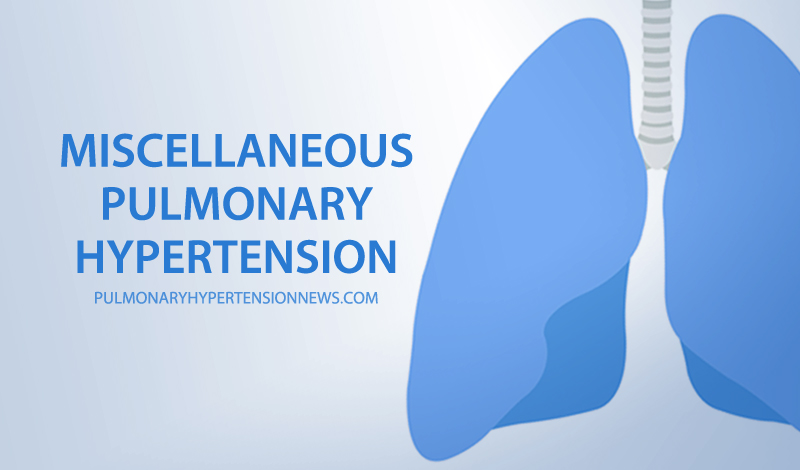Miscellaneous Pulmonary Hypertension

In 2008, the miscellaneous pulmonary hypertension category was expanded to include the “other” category associated with PAH. This allows for recognition of complex and poorly understood links between systemic disorders, blood disorders, metabolic disorders, and other medical issues and PAH. PAH is linked to a number of diseases for example; connective tissues issues, portal hypertension (veins which carry blood from the digestive organs to the liver), HIV and idiopathic forms. These conditions have been suggested to share similar obstructive changes as the pulmonary circulation. It is believed these pathobiological processes are shared between different tissues that lead to PAH.
Miscellaneous Pulmonary Hypertension Causes
The new classification for miscellaneous pulmonary hypertension includes:
Blood diseases such as myeloproliferative disorders, which are bone marrow diseases that produce excess amounts of blood cells, contribute to pulmonary hypertension. There are a number of other blood diseases that belong to this group.
Systemic disorders which include vasculitis (blood vessel inflammation) and neurofibromatosis – which can cause tumors to grow on nerve tissue – contribute to pulmonary hypertension. This can produce skin and bone abnormalities.
Metabolic disorders such as glycogen storage disease, thyroid disorders and Gaucher disease contribute to pulmonary hypertension. In Gaucher disease, lipids accumulate in cells and certain organs.
Miscellaneous Pulmonary Hypertension Symptoms
Miscellaneous pulmonary hypertension symptoms follow the same symptoms of other PH forms, plus symptoms of the underlying disease.
Miscellaneous Pulmonary Hypertension Diagnosis
Initial diagnosis follows other HP forms. Your healthcare provider will need your medical and family history. This will be followed by a physical exam to determine what symptoms you have. A doctor will try to confirm PH with tests such as an echocardiogram, chest X-ray, electrocardiogram (EKG) and/or right heart catheterization. To determine the underlying cause, lung function tests, chest CT and MRI scans, and/or polysomnograms will be done. Blood samples may be taken to run genetic tests for certain diseases.
Miscellaneous Pulmonary Hypertension Treatment
To relieve high blood pressure and prevent blood clots, various medications can be administered such as diuretics, blood thinners, phosphodiesterase inhibitors, prostacyclins, and calcium channel blockers. Medications may be administered to treat the underlying disease that caused pulmonary hypertension if such drugs are available.
Miscellaneous Pulmonary Hypertension Prognosis
The prognosis for miscellaneous pulmonary hypertension varies by patient and the underlying medical cause. Early detection is best and with the appropriate combination of therapies, quality of life can be greatly improved. The survival rate varies but typically runs at around 50 percent within a 3 year period.
Learn more about pulmonary hypertension here: https://bit.ly/1K4oewk







